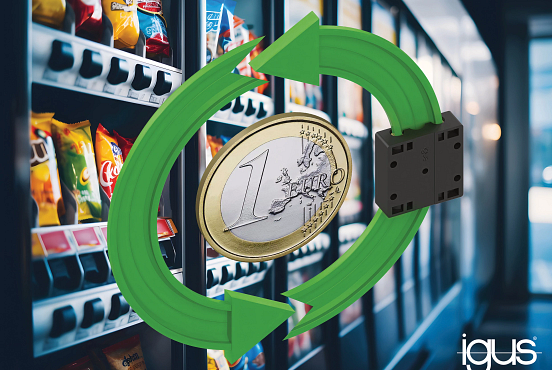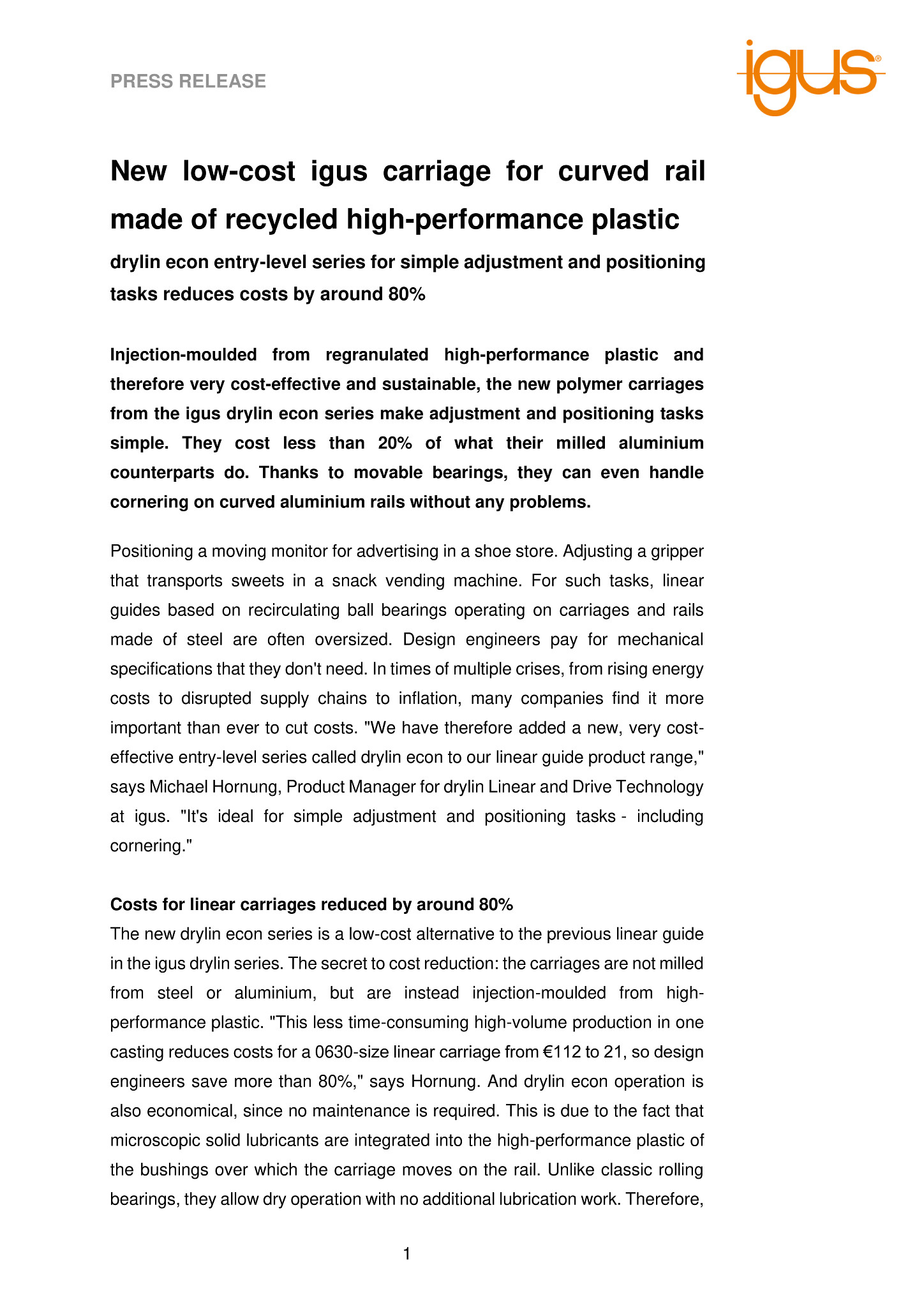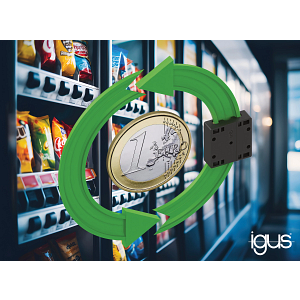New low-cost igus carriage for curved rail made of recycled high-performance plastic
Published on: 25th October 2023
drylin econ entry-level series for simple adjustment and positioning tasks reduces costs by around 80%

Injection-moulded from regranulated high-performance plastic and therefore very cost-effective and sustainable, the new polymer carriages from the igus drylin econ series make adjustment and positioning tasks simple. They cost less than 20% of what their milled aluminium counterparts do. Thanks to movable bearings, they can even handle cornering on curved aluminium rails without any problems.
Positioning a moving monitor for advertising in a shoe store. Adjusting a gripper that transports sweets in a snack vending machine. For such tasks, linear guides based on recirculating ball bearings operating on carriages and rails made of steel are often oversized. Design engineers pay for mechanical specifications that they don’t need. In times of multiple crises, from rising energy costs to disrupted supply chains to inflation, many companies find it more important than ever to cut costs. “We have therefore added a new, very cost-effective entry-level series called drylin econ to our linear guide product range,” says Michael Hornung, Product Manager for drylin Linear and Drive Technology at igus. “It’s ideal for simple adjustment and positioning tasks – including cornering.”
Costs for linear carriages reduced by around 80%
The new drylin econ series is a low-cost alternative to the previous linear guide in the igus drylin series. The secret to cost reduction: the carriages are not milled from steel or aluminium, but are instead injection-moulded from high-performance plastic. “This less time-consuming high-volume production in one casting reduces costs for a 0630-size linear carriage from €112 to 21, so design engineers save more than 80%,” says Hornung. And drylin econ operation is also economical, since no maintenance is required. This is due to the fact that microscopic solid lubricants are integrated into the high-performance plastic of the bushings over which the carriage moves on the rail. Unlike classic rolling bearings, they allow dry operation with no additional lubrication work. Therefore, users reduce maintenance time and material costs. These advantages make products that use the linear guide more economical and attractive. Last but not least, the system is exceptionally light. “drylin econ uses plastic and aluminium, so it is suitable for many lightweight constructions,” says Hornung.
Carriage leans elegantly into curves on moving spherical balls
drylin econ even allows movement around bends. igus produces both straight and curved versions of the anodised aluminium linear rails, allowing convex and concave curved guides and movement in quarter, half and full circles. The polymer bearings for the carriage for curved rail adapt to the rail geometry with moving spherical balls. “Even during cornering, movement is smooth, quiet and rattle-free,” says Hornung. “This is especially important for vending machines, such as beverage machines in a hotel lobby, that are set up in public and intended to work as inconspicuously as possible.”
Carriages made of injection-moulding production waste
However, the new carriages from the drylin econ series are not only economical to operate and low-cost, but also sustainable. For injection moulding, igus uses a regranulate called iglidur ECO P, which is made entirely of injection-moulding production waste, including sprue and defective parts. “Recycling keeps the plastic from being burned,” says Hornung. “Instead, we regranulate it and feed it into the resource-saving, environmentally friendly circular economy.”



